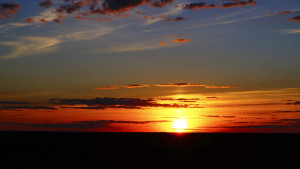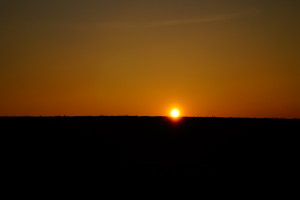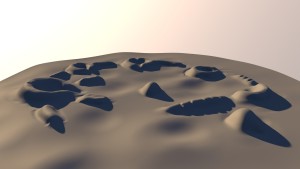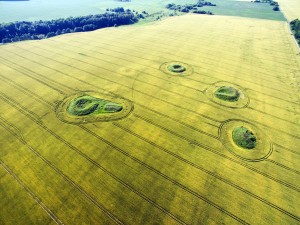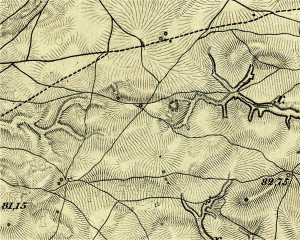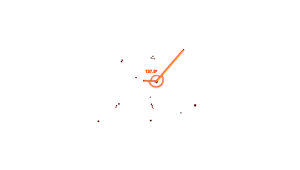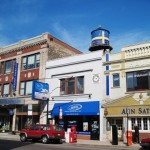It would seem that the era of the great archaeological discoveries is over. Many tombs are excavated, the ancient architectural complexes have been discovered. At our time of digital technologies, almost all the mysteries of ancient civilizations are unraveled. However, modern technologies help us to open new page in the book, historical science has put on the shelf to gather dust. New research methods allow us to have a different look at the civilizations of the ancient world.
In 2012, my attention was attracted by a group of mounds of unusual shape and with an interesting location. In Chernihiv region, nearby the city of Ichnia, at Bezvodivka plateau, a group of ancient mounds is located. Some of them were destroyed by the people and machinery, while others that remained were described by scholars as the mounds of nomadic tribes of the second millennium BC and were included into the catalogue. Barrows instead of the usual conical shape are cup-shaped and arranged in a circle with a diameter up to two hundred meters.
The question arose: what is it? Burial mounds? But, why aren’t they look like the other graves and are surrounded by an earthen wall? Maybe defenses? So why are they scattered over a large area against the rules of warfare? On the aerial photos, the dark spots can be seen, presumably on the site of the destroyed mounds. Topographic map of 1861 confirmed the existence once the other mounds in this complex. By combining old topographic maps with satellite and aerial pictures of this area, recently it has become available to unite the scattered mounds into a single complex, which occupies the area of nearly 20 square kilometers.
If one stands in the center of the complex, they may see the sun rise and set behind the hand-made hills on days of winter and summer solstice and days of equinox which have been special to the people since time immemorial. The most important holidays of the year fall upon these very days. Bezvodivka is an ancient horizon or solar observatory alike the English Stonehenge or German Goseck. Why is it a horizon observatory? The reason is that the movement of the points of the rise and set of the sun and other celestial bodies were marked on the horizon and the regularities of their movement over the celestial sphere were determined.
The principle of its work is as follows. At the center of a mounds circle is an observer that marks the points of sunrise and sunset, the moonrise and the moonset and other celestial bodies on the horizon. In the days of astronomically significant events of the solstices and equinoxes in terms of sunrise and sunset, a distant landmark, the near reference point and the observer’s eye lined up in one line. Bezvodivka is the instrument of an incredible scale, the components of which are land, sky and cosmic objects. Determining solar and lunar cycles enabled the ancient astronomers to calculate the dates of lunar and solar eclipses. The dimensions of Bezvodivka observatory and distances between its principal sights, which range from 800 to 4000 meters imply high precision of azimuths measurementsof the sun emergence points on the horizon.
The horizon observatory of Bezvodivka is not a random group of more than thirty earthworks of different formbut a complex planned in a mathematical way and has its own geometry. The evidence of that is the proportions laid by the architects into the observatory’s structure. The geometry in some way is determined by the terrain of the area, however, at the same time, its mathematical proportions perfectly fits the landscape.
The diameter of the central circle near landmarks is 185 meters, equivalent to the Greek measure of length stadium. The distance from the western near landmark to the western further landmark is 740 meters, equivalent to 4 stadiums. The distance from the center to the north and south landmarks is 9 stadiums or 1665 meters and twice longer than the distance from the center to the western further landmark which is 832 meters. The distance from the center to the northeastand two southern distant landmarks is exactly 16 stadiums. The distance from the center to the southeast and southwest distant landmarks is 18 stadiums; this is twice more than the distance between the center and the north landmark.
Look at the picture № 1.
Stadium was used in Babylon and it is the distance that a man has time to go through from the moment the first rays of the sun appear on the horizon until the solar disk leave the horizon. In the days close to the equinox, the sun is moving rapidly through the horizon and marking of this movement is easy but approaching the solstices beam, each new day the sunrise goes with a deviation of only a few minutes of arc. Then it completely stops for a few days and starts its way on the horizon line in the opposite direction. This explains why the landmarks, indicating the solstices, are four times further than the landmarks of equinox. The farther is landmark more accuracy in determination. A distance of more than three kilometers gives the required accuracy. There is the other relation between mounds expressed in distance. I discovered the relation of 1,618. That is, the “golden number” or “golden proportion”. Euclidis was the first to describe the golden proportion in 300 BC. However, the ancient Egyptians used this proportion in their architecture.
After Euclidis, the divine proportion is found in the works of the Medieval architects and painters, including Leonardo da Vinci. The “golden number” is presented in the relation of the distances between the center and the Western distant sight (832 m) and the center and the second Western DS (1343 m) 1346/832 = 1.618.
In addition, the distance between the center and one of the Northern DS (1830 m) correlates with the distance between the center and four distant sights that are 2960 meters far from it in accordance with the golden proportion. 2960/1830=1.618.
Look at the picture № 2.
The explanation of using the golden ratiocan be in the angle between the sunrise at the summer solstice and the sunset at the equinox. It is 137,5 degrees and called the golden angle.
Picture № 3.
Ancient astronomers could use the observatory, not only for the conducting of the solar calendar and holding the religious rites, but also as a tool to calculate the lunar cycle known as the Methon cycle, as well as to study the motion of the planets and stars in the sky. Long-term observation of the celestial bodies’motion, and knowledge of the laws of celestial mechanics, allowed determining the date of the lunar and solar eclipses and even catching the displacement of the equinoxes on the horizon due to variations in the Earth’s axis called precession.
The solar observatory Bezvodivka was built by an ancient civilization of the sun worshippers, which lived in harmony with nature and in line with the solar cycle. Their vision of the universe arrangement and its laws were embodied in the architecture of Bezvodivka. We have to find out who were the builders, how far into the past leads us its’ history and solve other mysteries of antiquity.
_____________________________________________________
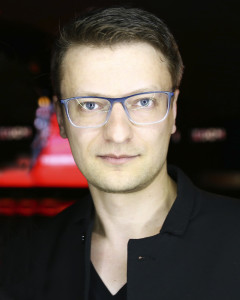
Olexandr Klykavka is an explorer of Ukrainian ancient history. He graduated from the National Agricultural University as an agrobiologist. But he always was fond of the history, astronomy and photography. Researcher suggested that the unusual archaeological sites of Bezvodivka are not just the burial mounds but have the astronomical function as the English Stonehenge has. Then he proved his assumption by mathematical calculations and astronomical observations. Olexandr is the author of the historical-research project The Solar Observatory Bezvodivka. Its purpose is the exploring of our ancient history and its popularization in Ukraine and abroad

